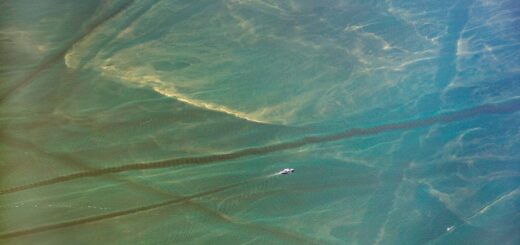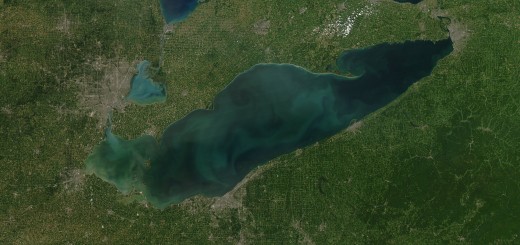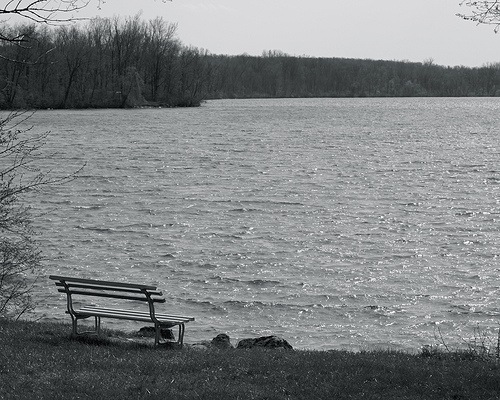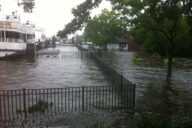Lake Erie Algal Bloom Forecast
0The 2015 algal bloom in Lake Erie was the largest in biomass since satellite record-keeping began in 2002. It came in spite of a forecast from scientists holding that a smaller bloom was likely, which came before heavy June rains changed everyone’s expectations. So what is in store for the Lake Erie algal bloom this year?
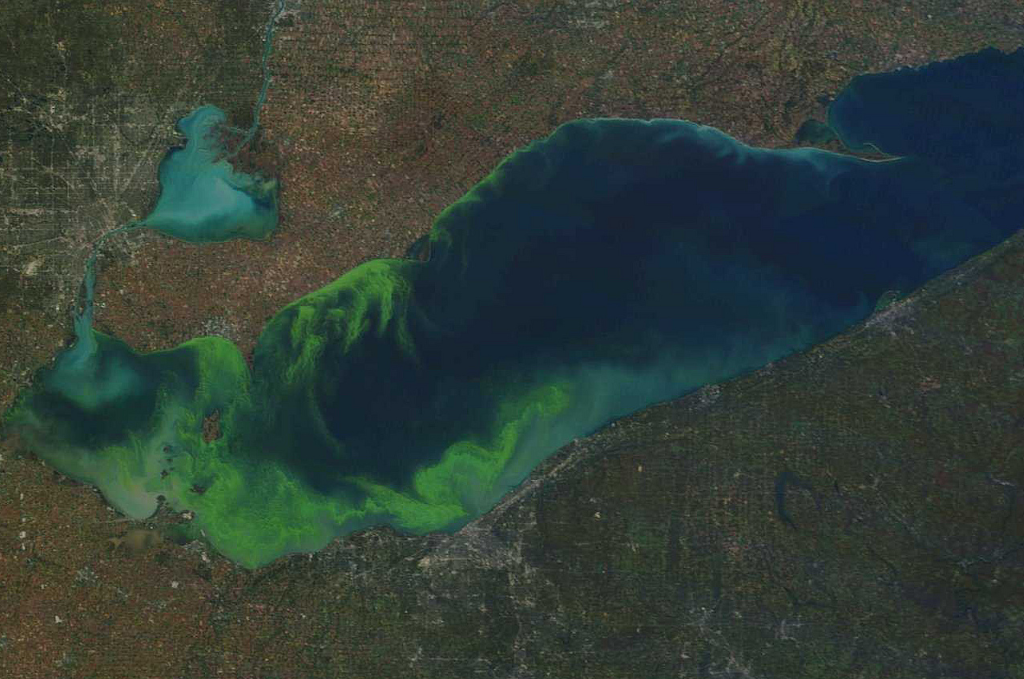
Satellite image from Oct. 9, 2011 showing an algal bloom in Lake Erie. (Credit: NASA)
According to a bulletin released by the National Oceanic and Atmospheric Administration and prepared with help from Heidelberg University’s National Center for Water Quality Research, the algal bloom is expected to be smaller this year than it was in 2015. But the accuracy of the prediction depends largely on what happens in June. A wetter June could push more runoff into the Maumee River and increase phosphorus loads.
The true extent of the algal bloom remains to be seen and the forecasts will be updated as conditions change. For the month of June, a projection will be released every week. That schedule will drop to a new projection once every two weeks for the month of July.

Projected bloom compared to previous years. (Credit: Heidelberg University and the National Oceanic and Atmospheric Administration)
The severity of the bloom in western Lake Erie depends on loads of total bioavailable phosphorus (TBP) from the river during what scientists term the “loading season” — between March 31 and July 1 each year. This spring has seen an average river load in the Maumee River, according to the bulletin, and precipitation is predicted to be close to normal over the next few weeks.
TBP is the sum of dissolved phosphorus (100 percent available to algal blooms) and portions of particulate phosphorus that are bioavailable. The loads of dissolved reactive phosphorus have been steadily increasing since about the mid 1990s, say scientists at Heidelberg. Because of that, they are attributing the return of algal blooms in Lake Erie since 2003 to dissolved phosphorus.
What are your expectations for the 2016 Lake Erie algal bloom? How important is dissolved reactive phosphorus in spurring the blooms? Please consider leaving a comment to share your thoughts!





